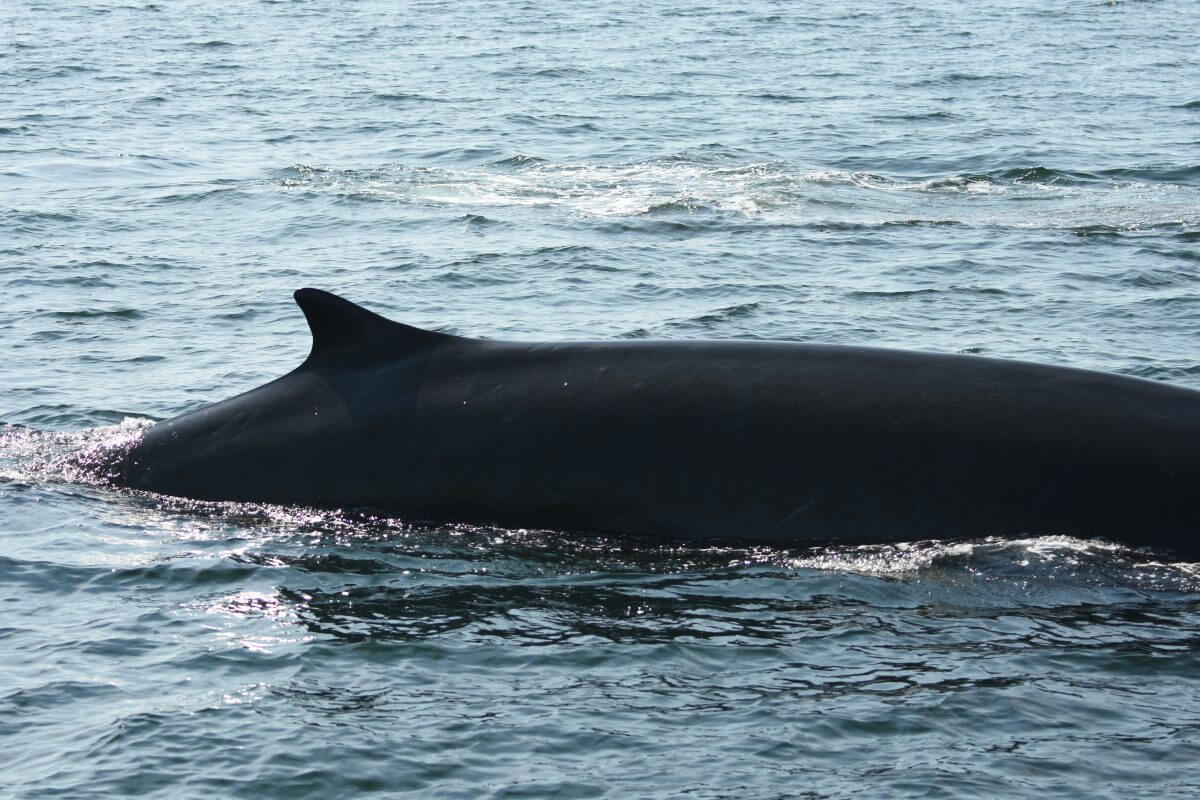Ligné
Fin Whale


-
ID number
Bp078
-
Sex
Male
-
Year of birth
Unknown
-
Known Since
1986
Distinctive traits
The dorsal fin of Bp078 is quite short and triangular in shape. His back has a few transverse scars.
Life history
Bp078, nicknamed “Ligné,” is a male fin whale that has been known for over 30 years. He has only been identified 12 times in 33 years, suggesting that Bp078 frequents feeding grounds other than the head of the Laurentian Channel. Under the code F326, he is also listed in the fin whale catalog of the Mingan Island Cetacean Study (MICS), which works mainly in the Gulf of St. Lawrence and off the Gaspé Peninsula.
Observations history in the Estuary
Years in which the animal was not observed Years in which the animal was observed
Latest news from the publications Portrait de baleines
Bp078, nicknamed “Ligné,” is a male fin whale that has been known for over 30 years. Yet he has never made the front page of Portrait of Whales! His dorsal fin is quite short and triangular in shape. His back has a few transverse scars. Could this be the reason for his nickname? You tell us! Along with Caïman, he is the only other fin whale known to GREMM since 1986 that has been observed at least once in the last 5 years. However, his frequency of visits is quite different from that of Caïman: he has only been identified 12 times in 33 years, which suggests that Bp078 frequents other feeding grounds than the head of the Laurentian Channel.
Fin whales are also nicknamed “greyhounds of the sea.” Indeed, their cruising speed of 9 to 15 km/h is quite fast for a whale. They can even maintain a speed of 28 km/h for short periods and accelerate to 37 km/h. However, despite this title, it is not the fastest of the whales. The sei whale (very rare in the St. Lawrence Estuary) can maintain a cruising speed of 55 km/h for a short period of time. The minke whale can accelerate to 38 km/h. The humpback whale is the slowest of the whales. Its average cruising speed varies between 5 and 14 km/h. Maximum accelerations of 25 km/h have been recorded. The swimming speed of whales varies depending on their activities: navigation, feeding, resting, breeding season, etc.
Assessing the cruising speed of a cetacean or marine mammal is no easy task. Tagging can be a source of information. A radio tag allows us to estimate the speed of an individual over a very specific period of time. For example, we were able to determine that a fin whale accelerated to 18 km/h while feeding, just before opening its mouth. Radio tags allow us to track the animal over long distances. For example, humpback whales tracked by satellite tags in the Pacific Ocean during their migration from the Hawaiian archipelago to Alaska allowed us to determine that these individuals traveled approximately 110 km per day at an average cruising speed of 4.5 km/h. A whale off the coast of Gaspé could swim up the estuary in less than a week, as Tic Tac Toe demonstrated last week. But the journey has to be worth it!
